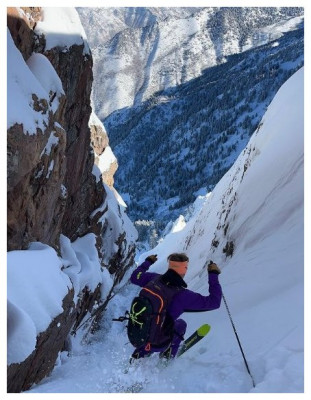8/22/2023 Alpine Touring Boots - How to Choose
It's a fairly intuitive statement to say backcountry skiers enter the backcountry to ski. What isn't as intuitive, however, is the individualized experience each of those skiers seeks to gain from their backcountry experience. For some, it's putting up 10K days while for others, it's charging down a single 1500-hundred-foot lap before work. While both experiences fall under the umbrella of backcountry skiing, the tools used to accomplish both of those tasks can look different. Responding to these equally valid yet different consumer demands, boot manufacturers have produced a plethora of options that can be a little overwhelming to navigate between. At Skimo Co, in an effort to consolidate these many offerings, we like to categorize boots as belonging to either race, touring, or freeride categories.
At one of the spectrum are race boots, which emphasize uphill efficiency while freeride boots inhabit the other end, aiming to provide maximum performance for the downhill. Somewhere in between the two are touring boots, which seek to provide balanced performance up and down.
This article will describe the generalizations of each boot category, its characteristics, and who it may be for. It's important to keep in mind that ski boots can be incredibly nuanced and sit between different categories. Therefore, the descriptions of the categories are purposefully broad and may not totally describe all boots that have a particular label.
Our goal is to help guide you to find which category of ski boot best fits your intended use, then it's up to you to work with a bootfitter or use our online boot fitter to find the boot that matches your unique foot shape.
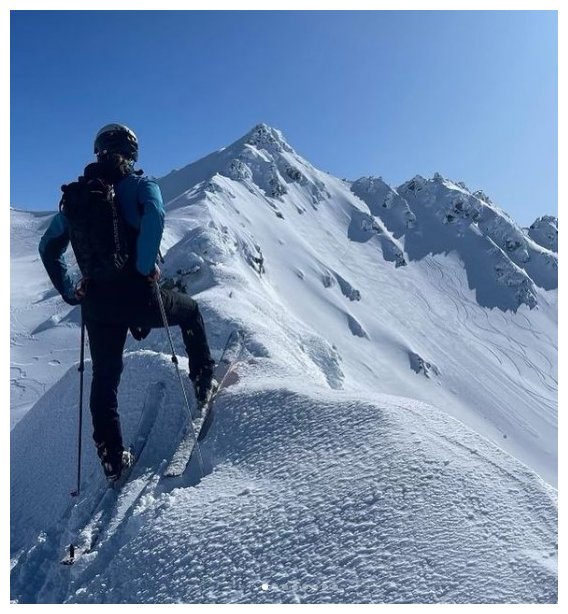
As the name suggests, these boots are intended for racers and/or those wanting to maximize uphill efficiency above all else.
While race boots pair the best with race skis, it's not uncommon for experienced ski mountaineers to use race boots with certain ski mountaineering skis, such as the Fast 85.
Race boots typically use the lightest material and constructive methods, within a certain budget, of the three categories. Carbon fiber, carbon-infused plastic, thin lightweight plastic (grilamid), or a combination of these materials are used to construct the shell. Race boots often forgo cuff buckles and instead rely on a Dyneema cord connected to the ski/walk mechanism to tension or loosen the cuff. Most race boots rely on a cable-tensioned system, such as a BOA, placed above the instep to secure the lower part of the foot. Race boot liners are generally quite thin and some are uniquely shaped. For example, the SCARPA Alien 4.0 is paired with a “bikini” style liner that terminates at the ankle.
The range of motion on boots within this category ranges between 60°-80° and is the most "frictionless" of the three categories, allowing the boot to be extremely efficient on the skin track. With the cuff tension determined by the ski/walk mechanism, transitions are exceptionally quick and easy. While race boots ski quite well when considering their weight and construction, most would agree these don't perform as well downhill as their touring or freeride siblings.
It should be noted that race boots are "downsized" compared to touring and freeride boots. For example, if you have a 26.5 Atomic boot that provides a comfortable "finger and a half" fit, a 26.5 Atomic race boot will be a "tight one finger." If you are using race boots for recreational purposes rather than racing, it may be worth considering sizing up, especially if you plan on using an aftermarket liner.
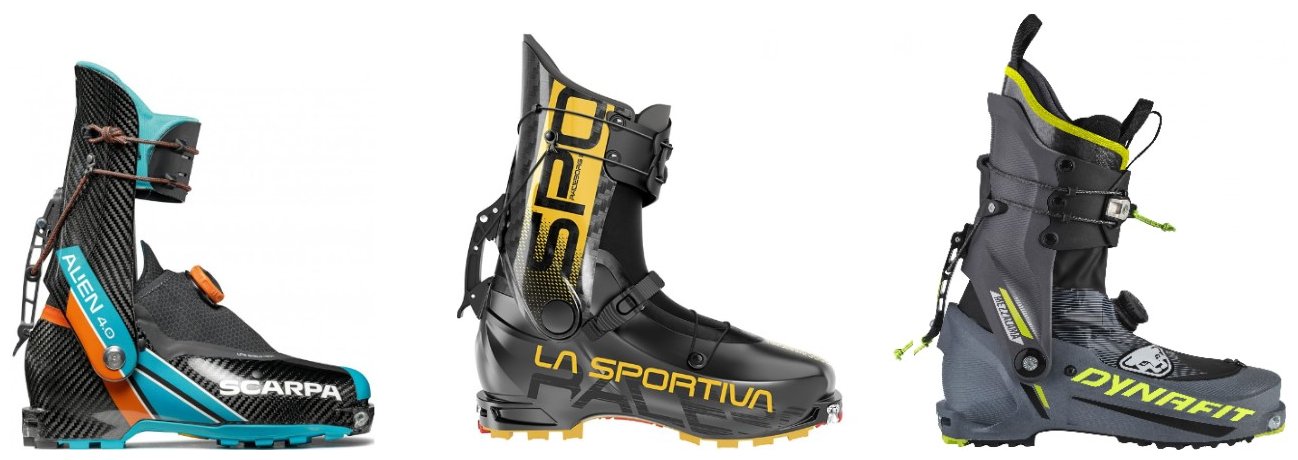
Touring boots occupy the middle ground between race and freeride boots. They tour better than a freeride boot and ski better than a race boot. For those seeking the best balance of uphill and downhill performance, this is the category to consider.
Touring boots work best when paired with ski mountaineering or touring skis. While some find touring boots adequate to drive bigger and heavier skis, if you don't have a reference for how these boots perform, we would recommend sticking with lighter skis until you form your own opinion.
Touring boots are generally constructed with carbon-infused plastic, lightweight plastic (mainly grilamid), or a combination of the two. Very specialized boots within this category, such as the Pierre Gignoux Mountain Boot, are made of carbon fiber. Boots in this category are typically made with two buckles; one on the cuff and the other on top of the instep. Cuff buckles are largely comprised of a Velcro strap or traditional metal construction, while the lower buckles are traditional metal or cable-tensioned systems (such as BOA or Dynafit Twistfit). Liners in this category are slightly thicker than race liners, and almost always traditionally constructed.
Similar to race boots, the range of motion of this category ranges between 60°-80°. Because thicker liners are used, there will be slightly more perceptible friction than race boots, though these boots are still exceptionally efficient while skinning. Transitioning with touring boots isn't as easy as a race boot, but quite a bit easier than freeride boots. Most would agree touring boots ski better than race boots and not as well as freeride boots.
It should be noted that touring boots exist on a spectrum rather than as absolutes. For example, the Fischer Travers is more related to race boots while the Fischer Transalp Carbon Pro is more aligned with freeride boots. Intuitively, if a boot is closer to race boots, it will have more performance characteristics of race boots. For questions regarding where your boots exist on the spectrum, please reach out.
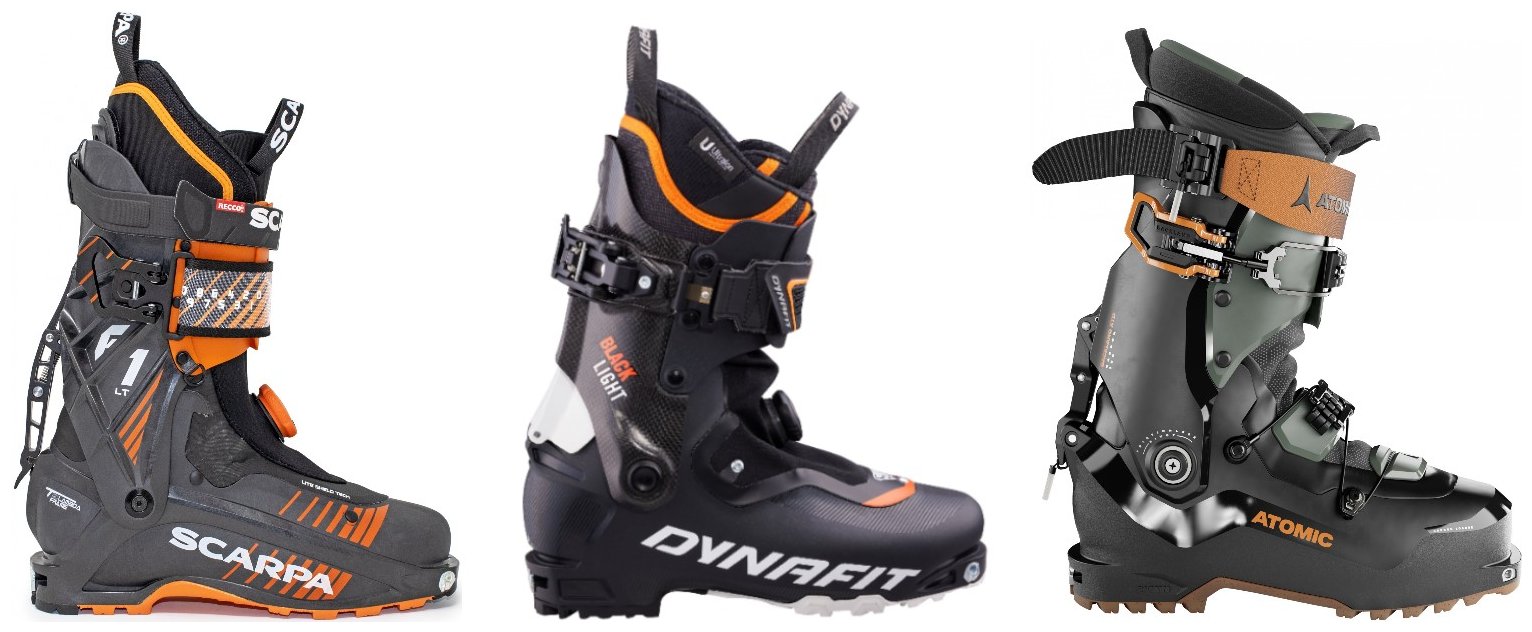
Freeride touring boots are for the people who want the best possible downhill performance and are willing to compromise on weight and efficiency to get it.
Freeride boots pair well with ski mountaineering, touring, and powder skis.
While utilizing similar materials as touring boots, freeride boots typically use thicker and/or reinforced materials to achieve the desired skiing characteristics. For example, the use of thicker and/or reinforced materials around the cuff pivots resists lateral forces, leading to more "stiffness" while skiing. Freeride boots typically have 3 to 4 buckles, which are almost always constructed with metal and/or metal cable. Some boots, like the SCARPA Maestrale RS, have a plastic instep strap designed to keep the heel locked firmly in place. Freeride boots often have thicker liners compared to touring boots, which provide stiffness and warmth.
The range of motion of freeride boots ranges between 53°-63° (though, some older boots have less). Additionally, the thicker liner means there is more perceptible friction compared to touring boots for its stated range of motion. Unlike 50/50 boots (addressed below), freeride touring boots can still used for big days in the backcountry, they just aren't as efficient as touring boots. Most would agree freeride boots perform the best on the downhill compared to the other categories.

Other Boots
We think it's important to address so-called “50/50” boots and how they differ from a freeride touring boot. Similar to all touring boots, 50/50 boots have tech fittings that allow for them to be used with tech bindings. While their name suggests a balanced usage of resort and backcountry, most will find this to be untrue. 50-50 boots utilize fairly heavy materials and liners, which severely impedes their usable range of motion and makes them quite heavy to haul uphill. Boots in this category are good for sidecountry missions or for the person who mostly skis in the resort but does one or two casual tours in a season. Most 50/50 boots have soles that work with Gripwalk bindings whereas freeride touring boots may or may not (it's important to check the specifications). In general, we do not recommend 50/50 boots to folks who want to spend most of their time in the backcountry.
Where To Go From Here
The hardest part of boot shopping is figuring out which category you fall into. Therefore, consider the pros and cons of each category and how that matches your backcountry goals. Do you want something that is balanced or more towards either of the extremes? Once you have the category part of the equation figured out, the next part is to find the best boot that fits your unique foot shape. Visit our online boot fitter, give us a call, or see us in person in SLC, and we will help get you sorted. After all, the best boot is the one that fits your goals and foot!
Did we miss something? Do you have personal experience to share? Please let us know in the comments below. Happy Skiing!
Comments
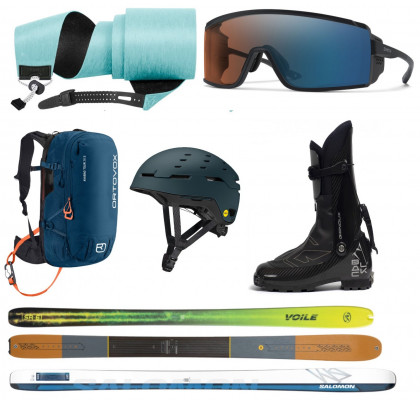
10/1/2023
2023/24 Season Preview
